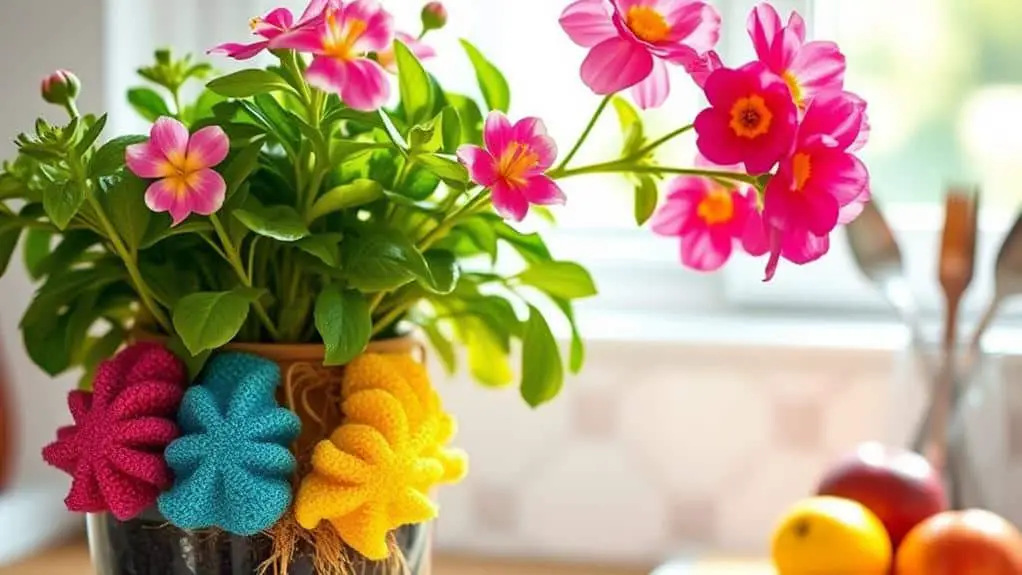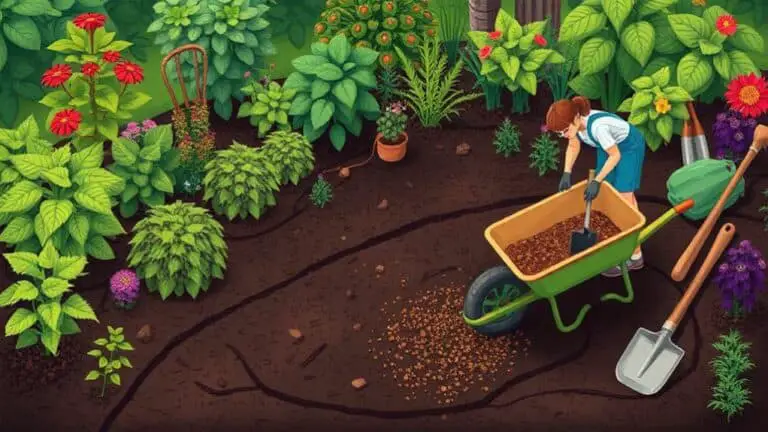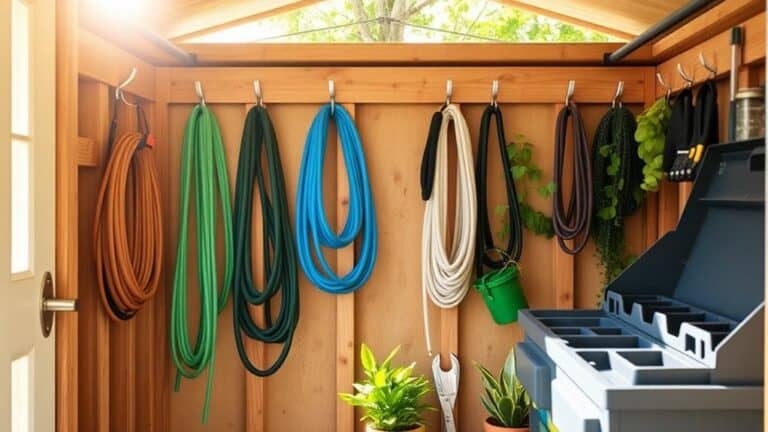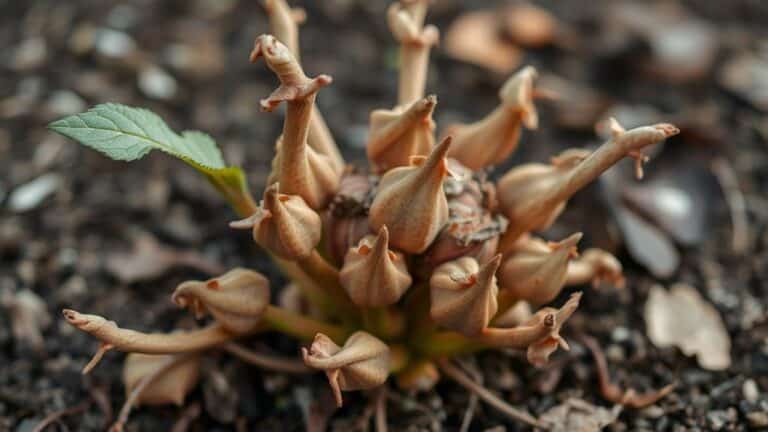Why You Should Fill Your Flower Pot With Kitchen Sponges
You might not believe it, but filling your flower pot with kitchen sponges can make a huge difference in your gardening routine. I've discovered that these sponges are excellent at absorbing excess water, which helps prevent root rot—a common issue for many plants. Not only do they keep the moisture levels balanced, but they also improve soil aeration, making it easier for roots to breathe. Plus, repurposing old sponges is both eco-friendly and cost-effective. Curious about how exactly to implement this method and what other benefits it offers? Let's explore this innovative gardening hack together.
Addressing Over-Watering
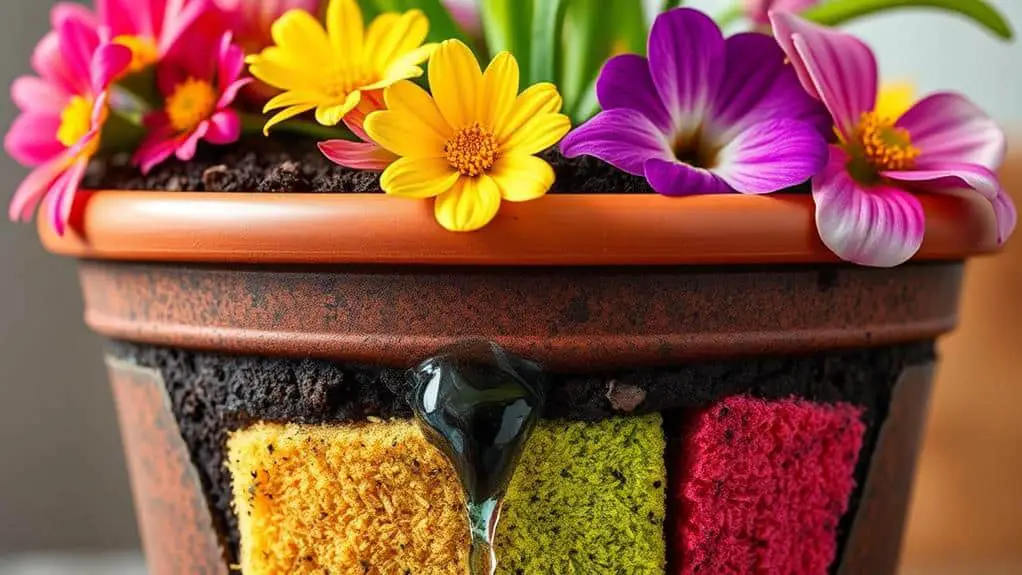
One of the most frustrating challenges in indoor gardening is over-watering, which often leads to root rot and a decline in plant health. Trust me, I've been there. It can be heartbreaking to see your once vibrant plants struggle.
But there's a simple trick to help manage this: using kitchen sponges in your pots. When you place sponges at the bottom of your flower pots, they act like tiny reservoirs. They absorb excess water and retain moisture, ensuring your plant roots aren't drowning.
This way, you don't have to water as often, and your plants get consistent hydration. Plus, repurposing old sponges is eco-friendly. It's a win-win for your plants and the environment.
Give it a try; your plants will thank you!
Placing the Sponges
To get started with placing the sponges, first make sure you have small, clean kitchen sponges on hand. Here's how I do it:
- Cut the sponges into smaller pieces. This makes it easier to place the sponges and helps them retain water effectively.
- Position the sponge pieces at the bottom of the flower pot. Make sure they cover the drainage holes. This prevents soil from escaping while still allowing water to flow.
- Check that the sponges are free from detergents and contaminants. This guarantees the sponges don't harm your plants.
Placing sponges in this way helps maintain consistent soil moisture levels. It reduces the risk of overwatering and root rot, giving your plants a healthier environment.
Retaining Moisture
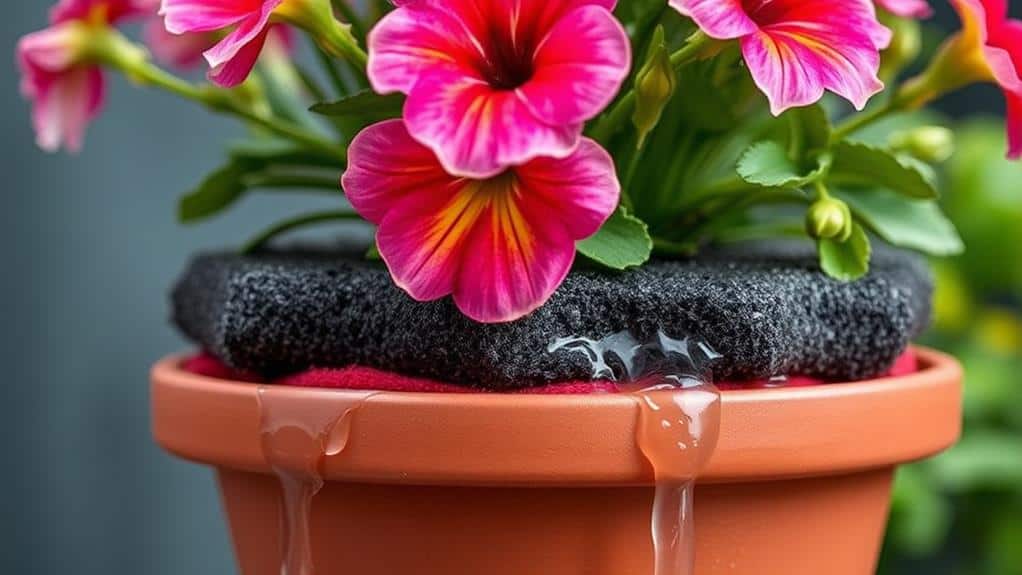
Now that the sponges are in place, let's talk about how they help in retaining moisture. Kitchen sponges are great at absorbing excess moisture, which stops water from accumulating and causing root rot. They retain water that would otherwise stagnate, helping to keep the soil consistently moist. This is essential for healthy plant growth.
Here's a quick look at the benefits:
| Benefit | Explanation |
|---|---|
| Water Retention | Sponges hold water, keeping soil moist longer. |
| Consistent Moisture | Promotes even soil moisture levels. |
| Reduced Watering Frequency | Less frequent watering during dry periods. |
| Improved Aeration | Porous structure allows roots access to moisture and oxygen. |
Using sponges enhances overall hydration, making your plants more resilient against drought stress. Your plants will thank you!
Cost Efficiency
If you're looking to save money while gardening, using kitchen sponges in your flower pots can be a game-changer. This method boosts cost efficiency in several ways:
- Less Potting Soil: Sponges take up space in the pots, meaning you won't need as much soil. This can save you money on potting mix.
- Enhanced Moisture Retention: Sponges hold water well, reducing the need for frequent watering and saving on water bills.
- Repurposing Sponges: Instead of throwing out old kitchen sponges, you can reuse them in your garden. This promotes recycling and cuts down on waste.
Additional Benefits
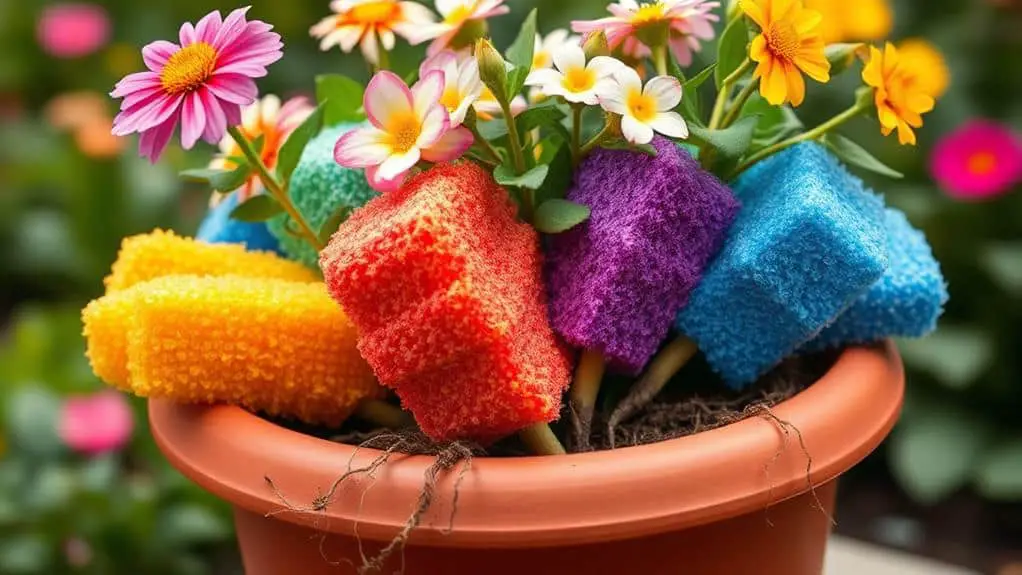
Besides being cost-efficient, filling flower pots with kitchen sponges offers a host of additional benefits that can greatly improve your gardening experience.
One major advantage is how sponges absorb moisture and retain it, preventing water accumulation that could lead to root rot. They also help aerate the soil, giving plant roots better access to oxygen, which is essential for healthier root development.
During dry periods, sponges retain water, ensuring your plants stay hydrated longer and reducing how often you need to water them.
Plus, they gradually release stored nutrients into the soil, enhancing overall nutrient availability.
Using sponges in your pots not only supports your plants but also promotes sustainable gardening by repurposing materials that might otherwise end up in landfills.
Preparing Used Sponges
First, let's make sure our used kitchen sponges are clean and safe for our plants. Soak them in soapy water for about an hour, rinse them well, and then cut them into small pieces.
Once they're dry, mix the sponge pieces into the soil at the bottom of your pots to help keep your plants' roots moist and well-aerated.
Cleaning and Sanitizing Sponges
Preparing used sponges for filling flower pots involves a few straightforward steps to confirm they're safe and effective.
First, you'll need to focus on cleaning and sanitizing sponges to remove any bacteria and contaminants.
Here's how:
- Soak: Place the sponges in warm water mixed with soap for at least an hour to effectively kill bacteria.
- Rinse: Thoroughly rinse the sponges under running water to make certain all soap residues are eliminated, which is essential for preventing harm to plants.
- Dry: Make sure the sponges are completely dry before using them in your flower pots. This step helps them retain water better and promotes healthy plant growth.
Following these steps will confirm your sponges are ready to enhance your plant's moisture environment.
Cutting Sponges to Size
To make your sponges garden-ready, it's essential to cut them into smaller, manageable pieces. First, verify the sponges are completely dry to avoid any mess.
Then, use scissors to cut the sponges into one to two-inch pieces. This size is perfect because it helps the sponge pieces mix easily with soil and retain water that would otherwise drain away.
Remember, cutting sponges to size not only improves their ability to hold moisture but also enhances aeration in your flower pots.
Mixing Sponges With Soil
Reusing sponges from your kitchen can be an eco-friendly and effective way to boost the health of your flower pots.
First, you'll need to prepare the sponges properly. Here's how:
- Soak: Immerse them in soapy water for an hour to disinfect and remove residues.
- Rinse: Thoroughly rinse the sponges to eliminate any soap, ensuring no harmful chemicals affect your plants.
- Cut: Chop the cleaned sponges into small pieces for easy mixing with soil.
Once prepared, place the sponge pieces at the base of your flower pot. This method helps retain moisture and nutrients, promoting healthier plant growth.
Make sure the sponges are clean and free from contaminants to create a safe environment for your plants.
Application in Plant Pots
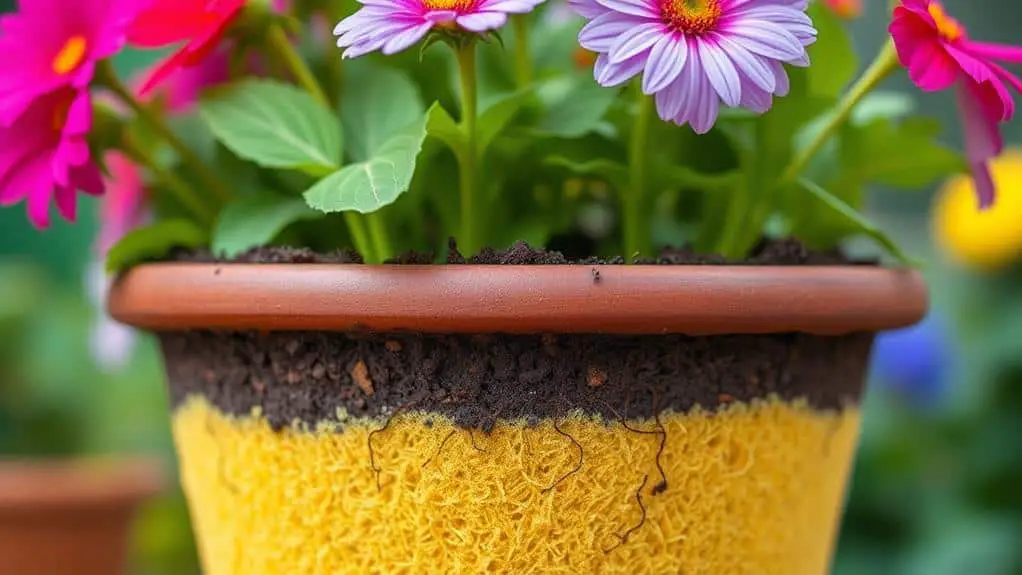
When it comes to enhancing water retention in plant pots, mixing sponge pieces with soil at the base offers a practical solution.
This method helps keep the soil moist, ensuring that your plants get the consistent moisture they need. Sponges are great for both indoor and outdoor plants, providing better drainage while also reducing how often you need to water.
By incorporating sponges into your potting soil, you help create an environment where roots can thrive. This is especially useful for growing vegetables and greens, as it optimizes nutrient availability and supports overall plant health.
Enhancing Soil Aeration
Although many gardeners focus solely on water retention, enhancing soil aeration is equally essential for plant health.
Using kitchen sponges in your flower pots can help aerate the soil, providing better oxygen access to plant roots. This leads to a healthier root system and more vigorous plant growth.
Here's why:
- Air pockets: The porous structure of sponges creates air pockets within the potting mix, improving soil aeration.
- Root penetration: Sponges break up compacted soil, making it easier for roots to grow and spread.
- Moisture control: They absorb excess water, preventing waterlogging that can suffocate roots.
Using Alternative Materials
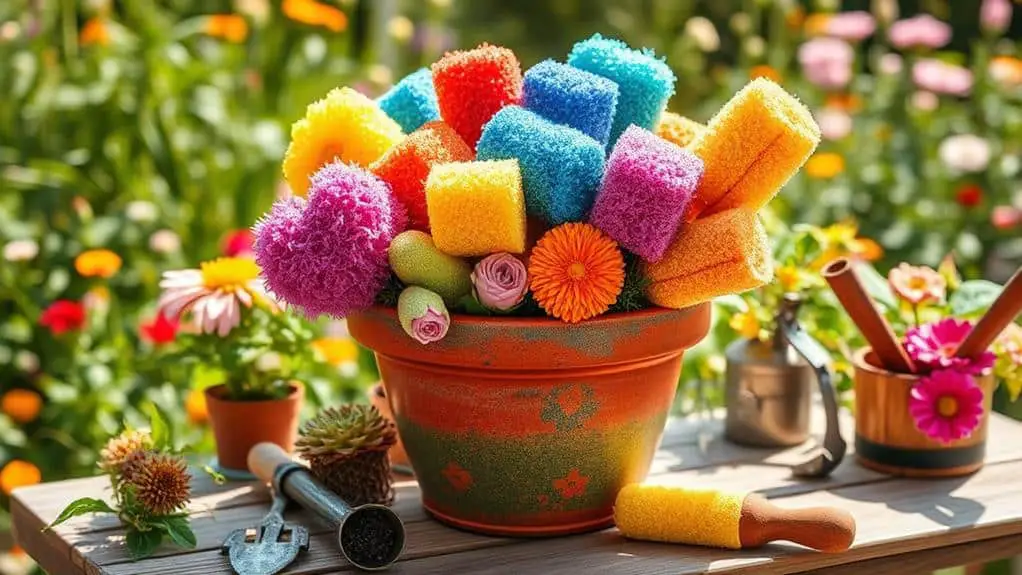
Exploring alternative materials for filling flower pots can't only improve plant health but also offer an eco-friendly solution to repurposing household waste.
I've found that using old or pretreated sponges at the bottom of pots helps keep the soil from compacting. You can also try crushed soda cans for better drainage.
Placing landscape fabric or screen netting over these materials guarantees soil stays put while water drains effectively.
Recycled plastics and packing materials are great lightweight fillers, reducing the amount of soil needed. Additionally, coffee filters at the base of your pots help keep the soil intact and allow excess water to escape.
For a natural touch, pine cones and wood chips aid drainage and enrich the soil with organic matter.
Long-term Plant Health
Integrating kitchen sponges into flower pots can greatly enhance long-term plant health. By improving moisture retention, sponges help keep plants consistently hydrated. This is essential for their growth and overall well-being.
Here are three key benefits:
- Prevention of Root Rot: Sponges absorb excess moisture, which considerably reduces the risk of root rot, ensuring a healthier root system.
- Enhanced Oxygen Access: Sponges aid in aerating the soil, allowing roots to get the oxygen they need for ideal growth.
- Nutrient Release: Sponges gradually release nutrients, reducing the need for frequent fertilizer applications and supporting sustained plant health.
Using kitchen sponges also promotes eco-friendly practices by repurposing materials that might otherwise be discarded.
It's a win-win for you and the environment!
Frequently Asked Questions
Why Put a Washing up Sponge in the Garden?
I put a washing up sponge in my garden because it offers great sponge benefits. It helps with moisture retention, preventing root rot, reducing watering frequency, and promoting better aeration, which leads to healthier, more vigorous plant growth.
What Is the Best Thing to Put in the Bottom of a Flower Pot for Drainage?
For the best drainage, I recommend using alternative drainage materials like gravel or broken pottery. These materials improve water flow and reduce potting soil usage, ensuring your plants thrive without waterlogging issues. Consider these options for healthier plants.
Should You Put a Sponge at the Bottom of a Plant Pot?
I think you should put a sponge at the bottom of a plant pot. The sponge benefits include better moisture retention and improved drainage. This setup helps prevent root rot and supports healthier root development, making plant care easier.
Should I Put Anything in the Bottom of My Planter?
Yes, you should add drainage layers to the bottom of your planter. I usually use materials that improve drainage and save potting soil. This prevents waterlogging and keeps my plants' roots healthy and thriving.
Conclusion
So, give it a try! Filling your flower pots with kitchen sponges is a simple, cost-effective way to improve your plants' health. You'll prevent over-watering, retain moisture, and enhance soil aeration. Plus, it's an eco-friendly option that reduces waste. Whether you're a gardening newbie or a seasoned pro, this method can make a big difference. Happy gardening, and enjoy watching your plants thrive with this easy, sustainable trick!

